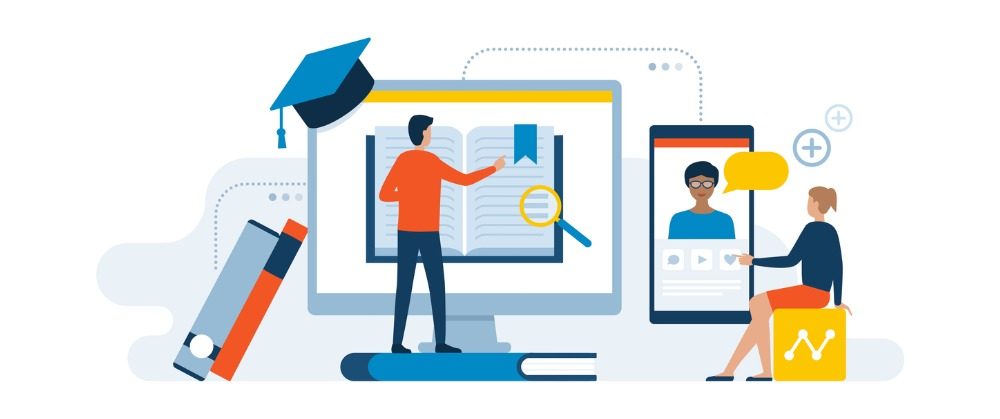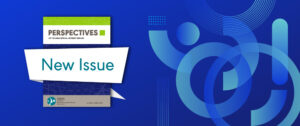The current educational model for speech-language pathologists (SLPs) was established when the master’s became the entry-level degree in 1963. Since then, the educational model for SLPs has evolved incrementally with standards being added periodically, such as the recently added knowledge and skills pertaining to interprofessional collaborative practice and clinical education/supervision. However, substantial changes to the scope of practice and how SLPs deliver services and provide value within educational and health care systems, coupled with the scarcity of clinical placements, has brought us to a tipping point. Based on widespread concern that many academic programs are struggling to prepare SLPs to enter practice encompassing all of the “Big Nine” clinical areas across the lifespan and the difficulty programs are having securing a sufficient number of clinical placements, the ASHA Board of Directors established and charged the Ad Hoc Committee on Graduate Education for Speech-Language Pathologists with addressing whether the current model of entry-level education for SLPs is adequately serving the public and the profession.
The Ad Hoc Committee on Graduate Education for Speech-Language Pathologists submitted its Final Report in March 2020. This comprehensive report summarizes data from focus groups, surveys, and reviews of related professional organizations in education and healthcare. As we look to the next steps in SLP education, this article focuses on one key aspect of that report, namely the themes that emerged about how adequately the publicand the profession of speech-language pathology are being served by the current educational model.
Are We on the Right Track?
For many years, educators have questioned whether the current educational model is sustainable given significant growth in the scope of practice and the complexity of service delivery. On page 2 in the Preamble to the current Standards for Accreditation, the Council on Academic Accreditation (CAA) “recognizes that programs are responding to a range of pressures from within their institutions (e.g., to increase enrollment) and outside the institutions (e.g., to provide more employment-ready, highly educated to fill the vast need for practitioners). Not only is there a demand for more professionals, but—in the changing health care and educational arenas—these new professionals are expected to be able to function in complex, interdisciplinary, and collaborative models of service delivery.”
Due to the significant growth in the SLP scope of practice and complexity of service delivery, the challenge of educating SLPs is analogous to Alice in Wonderland when she grew 10 feet tall while inside the White Rabbit’s tiny house. Programs have altered the curriculum and pedagogical approach over the years to accommodate growth, yet the educational model, like the White Rabbit’s house, has not changed. Programs are trying to squeeze growing content into an educational model that is already bursting at the seams.
Stakeholder Perceptions about SLP Education
The committee fielded and reviewed multiple survey and focus group reports and read through hundreds of open-ended responses provided by ASHA members, CSD academic faculty, students (undergraduate, master’s, and clinical doctoral and research doctoral students in speech-language pathology), and employers to ascertain which aspects of the current entry-level education model are serving the profession and public adequately and which are not. Input was also solicited from ASHA’s School Issues Advisory Board, the Council of Academic Programs in Communication Sciences and Disorders (CAPCSD), the State Education Agencies Communications Disability Council (SEACDC), and the Speech-Language Pathology Advisory Council members during the 2-years that the committee worked on the charge (2018 & 2019). In Tables 1 and 2, a synopsis is displayed of the themes that emerged about how adequately the public and the profession of speech-language pathology are being served by the current educational model.
Based on analyses of multiple surveys and focus groups, the committee concluded that there is widespread concern that students may not be consistently prepared to enter practice to deliver services across the full scope of practice across the lifespan. Concerns that were frequently expressed included:
- Programs having a sufficient number of faculty and sufficient time in the curriculum to prepare students to enter practice across all nine of the core clinical areas across the lifespan
- Students having sufficient time to delve deeply into any one clinical area, as it perpetuates the limited expertise and number of specialists in areas such as voice, fluency, augmentative and alternative communication, autism, dysphagia, and others
- Programs being able to secure a sufficient number of clinical placements and finding SLPs who can provide supervision
The persistent faculty shortage further exacerbates the situation. As indicated by the data reviewed in the committee’s report, changes are needed, but exactly what changes are needed to address current challenges and improve entry-level education for SLPs in the future remains unclear. Department chairs who participated in a focus group, (see p. 60 of the committee’s Final Report), agreed that “it’s time to reexamine what it is we believe students need to be able to do (i.e., competencies) and not so much what they need to know (i.e., knowledge and skills).” These competencies might address areas within the “Big Nine” but importantly, the Ad Hoc Committee concluded, on page 49, that “competencies should be considered for areas such as critical thinking, problem-solving skills, professional responsibilities, ethics, cultural competence, interprofessional collaborative practice, evidence-based practice, and both oral and written communication skills.” As research and deliberation about this topic continue, the committee emphasized that it will be important “to anticipate how educational preparation could be adjusted to better align with the future of learning and the future of work” (p. 63).
Then Came COVID
After operating in survival mode for the past year, it is now time to return our attention to the future of SLP education since there appears to be light at the end of this pandemic tunnel. Another ad hoc committee is being formed that will be charged with making recommendations to the ASHA Board of Directors about how these efforts can be advanced, including how best to get more input from a larger group of stakeholders to further the discussion and address the following questions:
- What is needed to adequately prepare future SLPs to enter the profession?
- What competencies are needed to enter speech-language pathology practice, and how should they be acquired and evaluated?
- Which aspects of the current model of entry-level education for speech-language pathology in the United States are serving the profession and the public adequately now, and in the near future, and which aspects are not?
- Are there changes to the current model of entry-level education that would likely help to address challenges, gaps or unmet needs that have been identified?
Next Steps
To determine the next steps, additional input is needed from a large group of stakeholders and alternative educational models need to be considered, competency-based models in particular, so that educational preparation and evaluation of student readiness for entry-level practice can be enhanced. To find solutions to the multiple challenges identified, a sea-change is needed because making small incremental adjustments around the edges is unlikely to resolve persistent problems, such as:
- How can programs fit more into an already packed curriculum, especially when they are likely under-staffed due to persistent faculty shortages?
- How can the growing number of graduate students in speech-language pathology in the United States continue to be accommodated, especially given the significant shortage of clinical placements?
These challenges compel further consideration of how entry-level education for SLPs can be improved, and perhaps, redesigned. The profession of speech-language pathology has grown beyond the educational house that was built in 1963. It is likely that an all hands on deck approach will be needed to find solutions that address these longstanding problems. It is imperative that we also look forward as much as possible so that we can imagine an educational model capable of supporting future growth and change for many years to come. ASHA will continue to provide updates about how this effort is progressing and ways that stakeholders can provide input.
Table 1. Aspects of the current model of entry-level education for speech-language pathologists (SLPs) that are and are not adequately serving the public.
| Serving the public well | Not serving the public well |
| Lifespan preparation of SLPs to work across settings and with all age groups. | SLPs may not be consistently prepared to work across many settings nor are they consistently prepared in regulatory matters. |
| SLPs are well-prepared in some areas, and they have access to continuing education and resources to learn more about other areas. | SLPs may not be consistently well-prepared in all areas of practice, not even across all of the “Big Nine” areas. |
| Most SLPs are highly dedicated and capable individuals. | There is insufficient diversity among SLPs (e.g., under-represented minorities, males). |
| Academic accreditation helps to maintain the quality of academic programs. | There are shortages of SLPs in most states and in many settings. |
| The Certification of Clinical Competence in Speech-Language Pathology (CCC-SLP) is viewed as being highly valuable. | The current model lacks a competency framework to guide educational preparation and self-evaluation of readiness for specific areas of practice. |
| SLPs can provide services across the full spectrum of communication disorders. | There is a scarcity of SLPs specializing in areas such as fluency disorders, voice disorders, alternative and augmentative communication, and dysphagia. |
| Speech-language pathology services are reimbursed by private insurance, Medicare, Medicaid, and so forth, because state licensure includes educational requirements that are consistent with the CCC-SLP. | There are concerns about SLPs’ knowledge of billing and reimbursement, documentation, regulations, ethics, interprofessional collaborative practice, evidence-based practice, and cultural competence. |
Table 2. Areas of the current model of entry-level education for speech-language pathologists (SLPs) that are and are not adequately serving the profession.
| Serving the profession well | Not serving the profession well |
| Lifespan preparation enables flexibility to transition across settings. | Students may not be consistently prepared in many areas, nor consistently prepared to work across settings. |
| Students are well-prepared in some areas. | Students may not be consistently prepared even in some of the “Big Nine” areas. |
| There are outstanding applicants. | There is insufficient student diversity (e.g., under-represented minorities, males). |
| There is a plethora of applicants. | A large number of undergraduate majors cannot get into graduate school in speech-language pathology. |
| Academic programs have freedom to design and deliver the curriculum flexibly to meet the standards. | The current model lacks a competency framework to guide educational preparation and evaluation of student readiness for entry into practice. |
| The use of simulation enhances learning. | There is an over-reliance on volunteer professionals for outplacements and variable quality across these experiences. |
| There is high career satisfaction among speech-language pathologists. | There is a scarcity of outplacementsand supervisors who are willing and able to offer clinical placements. |
| There is a high graduation rate. | There is high variability in what academic programs offer for student placements. |
| There are high pass rates on the PRAXIS.® | There is a lack of alternative models for accessing graduate education in speech-language pathology on a part-time basis. |
| There is a high employment rate. | There may not be enough momentum or capacity in universities to prepare for the future of learning and work. |
| There is a high demand for SLPs in the workforce across schools, health care, home health, early intervention, and private practice settings. | Not enough programs are preparing undergraduate majors to become assistants, nor enough graduate programs preparing future SLPs to work with assistants. |
| Maintaining the 2-year master’s degree educational model in speech-language pathology helps control student debt load. | Trying to fit the full scope of practice across the lifespan into a 2-year master’s program is counterproductive to achieving educational outcomes and overly stressful for students. |










